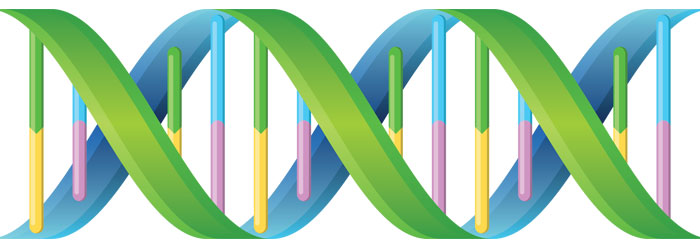Modern evolutionary theory has never been without its problems and controversies—even among secular scientists. Famed evolutionist Douglas Futuyma recently stated:
Ever since the Evolutionary Synthesis of the 1930s and 1940s, some biologists have expressed doubt that the Synthetic Theory [the prevailing modern version of evolution, also called neo-Darwinism], based principally on mutation, genetic variation, and natural selection, adequately accounts for macroevolution, or evolution above the species level.1
In fact, two of the most prominent and vocal skeptics were actually the leading neo-Darwinist evolutionists of their day. Ernst Mayr, an expert on speciation and systematics, and George Gaylord Simpson, a prominent paleontologist, inferred from the fossil record that evolution occurred erratically—large jumps with no transitional fossils—with many creatures not seeming to evolve at all.2 For example, many fossils supposedly tens or even hundreds of millions of years old are essentially identical to living versions of the same creatures.3
These glaring contradictions in the fossil record ultimately provided the basis for the subsequent theory of punctuated equilibrium proposed in 1972 by renowned evolutionists Stephen J. Gould and Niles Eldredge.4 To accommodate the reality of the fossil record, which lacks the transitional forms needed to prove evolution, punctuated equilibrium suggests that evolution is marked by long periods of stability (stasis or no change) intermittently interrupted by infrequent bursts of rapid change in which a fundamentally new form comes into being. The main problem with this “hopeful monster” idea is that the molecular biology and genomics revolutions that came on the heels of the theory essentially destroyed the genetic foundations of both it and the Synthetic Theory.
If the problems with the fossil record were not bad enough, evolutionists are now faced with the unimaginable complexity found in any living cell and its genome. And not only are useful mutations extremely rare, nearly all genes studied to date are unable to freely mutate and evolve as once thought. Instead, genes form irreducibly complex hierarchical networks with many other genes and regulatory systems in the cell.
In addition, it now appears that DNA in the genome can be tagged in specific places with special molecules that change gene function but keep the DNA sequence intact—a field of study called epigenetics. Epigenetic changes are dynamic and controlled by complicated cellular systems. They enable incredible levels of fine-tuned, environment-specific adjustments within organisms without any DNA sequence modifications whatsoever. Offspring can even inherit many of these epigenetic changes.
In light of these new genomic discoveries, evolutionary scientists are now at odds with one another over how evolution can work at even the most basic genetic level. Approximately 10 years ago, a splinter group of prominent evolutionists broke off and formed a movement called The Third Way or the Extended Evolutionary Synthesis.5,6 In regard to classical neo-Darwinism, which is still quite popular in the secular mainstream, they claim neo-Darwinism “ignores much contemporary molecular evidence and invokes a set of unsupported assumptions about the accidental nature of hereditary variation.”6 They also state:
The DNA record does not support the assertion that small random mutations are the main source of new and useful variations. We now know that the many different processes of variation involve well regulated cell action on DNA molecules.6
So to what does this new breed of daring scientists attribute evolution, given that they also reject the powerful evidence that an omnipotent Divine Engineer is responsible for all this “well regulated cell action”? Well, for the time being, it looks like they are simply claiming ignorance and that they need “a deeper and more complete exploration of all aspects of the evolutionary process.”6
The fact of the matter is that no volume of evidence, no matter how overwhelming, will ever be convincing enough if you are dead set in your presupposition that there is no divine source for the unimaginable complexity we observe in all living systems. As the Bible accurately states, “The fool has said in his heart, ‘There is no God’” (Psalm 53:1).
References
- Futuyma, D. J. 2015. Can Modern Evolutionary Theory Explain Macroevolution? In Macroevolution: Explanation, Interpretation and Evidence. Serrelli, E and N. Gontier, eds. Cham, Switzerland: Springer International Publishing, 29-85.
- Carroll, S. B. 2009. Remarkable Creatures: Epic Adventures in the Search for the Origins of Species. Boston: Houghton Mifflin Harcourt.
- Morris, J. and F. Sherwin. 2012. The Fossil Record: Unearthing Nature’s History of Life. Dallas, TX: Institute for Creation Research.
- Eldredge, N. and S. J. Gould. 1972. Punctuated equilibria: an alternative to phyletic gradualism. In Models in Paleobiology. Schopf, T. J. M., ed. San Francisco: Freeman, Cooper and Company, 82-115.
- Laland, K. N. et al. 2015. The extended evolutionary synthesis: its structure, assumptions and predictions. Proceedings of the Royal Society B. 282 (1813): 20151019.
- Rationale. The Third Way: Evolution in the Era of Genomics and Epigenomics. Posted on thethirdwayofevolution.com.
* Dr. Tomkins is Director of Life Sciences at the Institute for Creation Research and earned his Ph.D. in genetics from Clemson University.















